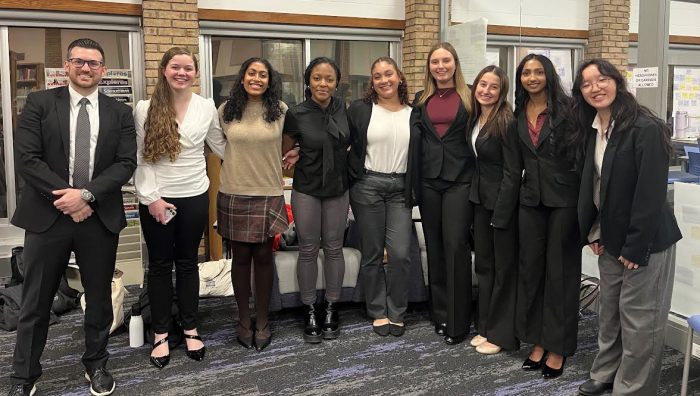Transitioning to solar power
If we are to transition from our conventional fossil-fuel electrical power plants to units based on solar power, we must have at least a reasonable forecast of the number of solar panels that will be required, along with the land area that will be needed to locate them. At the present time, Suffolk County uses an average continuous power of approximately 1,233 MW. If we are to produce this power using solar panels, let us assume that each panel can provide 400 W of power, when bright sunshine is available.
If this sunshine were available continuously, the number of panels required would be approximately 3.1 million. However, at our best, this sunlight is available for only 8 hours of each 24-hour period, or 1/3 of the time. For this reason, we will require 3 times the number of panels, or 9.3 million, to provide the average power necessary. During each 8-hour active period, these panels will generate 3,720 MW, of which 1,240 MW will be used to power the grid, and the remaining 2,480 MW will be charging the battery energy storage system (BESS) facilities, which will power the grid during the next 16 hours, when sunlight is not present, and the solar panels are not active.
To estimate the area required for the installation of these panels, let us assume that the area of each panel is 10 square feet. Therefore, the required land area to support the 9.3 million panels will be 93 million square feet, or 3.3 square miles, which is slightly more than twice the area of the SUNY Stony Brook college campus.
On those occasions when we have one or more consecutive days with cloudy or overcast skies, an additional 9.3 million solar panels will be required for each day without sunlight, if we are to prevent power blackouts. Thus, for one day without sunlight, 18.5 million panels will be needed, on land space of 6.6 square miles. For two consecutive days, 27.7 million panels will require 9.9 square miles. And for three overcast days, 36.7 million panels will need 13.3 square miles. It should be noted that these are “ballpark estimates,” and a number of factors may serve to increase, or decrease, the number of panels required to avoid power blackouts.
To reduce this number, power may be contributed from other sources, possibly windmills or other venues, such as Nassau County or Connecticut. However, we will also need to consider likely significant increases in projected power requirements, including power for memory banks for artificial intelligence, increased use of EVs, expanded electrification of the Long Island Rail Road and numerous other applications, which will lead to a need for greater numbers of solar panels, and more land space on which to mount them.
George Altemose
Setauket
Congressman LaLota’s vote to cut Medicaid
Despite repeated reassurances on social media that he would “protect” Medicaid, Congressman Nick LaLota (R-NY1) joined his Republican colleagues in voting to advance the House Budget Resolution, which calls for $880 billion in Medicaid cuts over the next 10 years. Mr. LaLota claims that he does not support deep cuts to Medicaid, however, his support for this bill says otherwise. He has made multiple references to disenrolling undocumented immigrants from Medicaid despite undocumented immigrants already being ineligible for federal Medicaid funding with the exception of emergency care. Under the Emergency Medical Treatment and Active Labor Act of 1986 all hospitals with an Emergency Room must provide emergency evaluation and care to anyone presenting to the ER, regardless of their immigration status or ability to pay. Emergency Medicaid is a lifeline for hospitals and allows them to defray the cost of providing necessary care.
LaLota’s support for work requirements likewise is projected to save approximately $110 billion over the next 10 years, while simultaneously cutting health care for thousands of CD 1 residents. Additionally LaLota levies accusations of waste, fraud and abuse in Medicaid, but fails to support this claim with any data. Medicaid fraud by recipients is rare. Most fraud is perpetuated by unethical providers; however, there is no evidence to suggest that there is $770 billion worth of fraud. It is also worth noting that many times the Centers for Medicare and Medicaid Services deems payment to providers as inappropriate; however, upon receiving further clinical documentation the decision is reversed. As a Medicaid provider I am subject to routine audits of my work at the county, state and federal levels. Medicaid reimbursement rates are so poor that many providers do not participate. Medicaid recipients already face a limited network of providers.
Elderly and disabled Medicaid recipients disproportionately account for program expenditures. According to the Kaiser Family Foundation individuals with disabilities account for 21% of Medicaid enrollment but 52% of Medicaid expenditures. The only way for House Republicans to reach their stated goal of $880 billion dollars in cuts over the next decade is to target these expenditures, which include medications, rehabilitation, congregate care and medical devices.
Everyone deserves access to high-quality, affordable health care. LaLota just made it more difficult for his constituents to do so. Furthermore, he helped lay the groundwork for the most vulnerable among us to lose access to lifesaving care.
Kathryn Twomey
Port Jefferson Station
WRITE TO US … AND KEEP IT LOCAL We welcome your letters, especially those responding to our local coverage, replying to other letter writers’ comments and speaking mainly to local themes. Letters should be no longer than 400 words and may be edited for length, libel, style, good taste and uncivil language. They will also be published on our website. We do not publish anonymous letters. Please include an address and phone number for confirmation.
Email letters to: [email protected] or mail them to TBR News Media, P.O. Box 707, Setauket, NY 11733




















